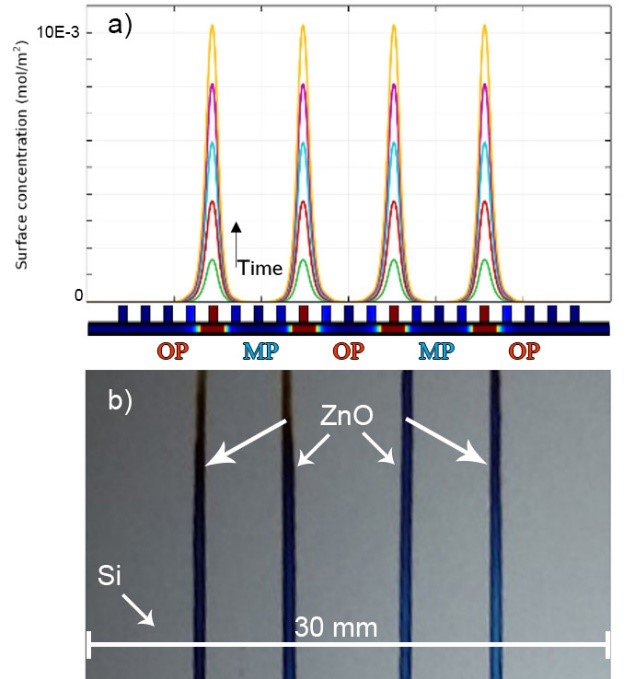
-
- to
Here you will fins César's paper
"Within the materials deposition techniques, Spatial Atomic Layer Deposition (SALD) is gaining momentum since it is a high throughput and low-cost alternative to conventional atomic layer deposition (ALD). SALD relies on a physical separation (rather than temporal separation, as is the case in conventional ALD) of gas-diluted reactants over the surface of the substrate by a region containing an inert gas. Thus, fluid dynamics play a role in SALD since precursor intermixing must be avoided in order to have surface-limited reactions leading to ALD growth, as opposed to chemical vapor deposition growth (CVD). Fluid dynamics in SALD mainly depends on the geometry of the reactor and its components. To quantify and understand the parameters that may influence the deposition of films in SALD, the present contribution describes a Computational Fluid Dynamics simulation that was coupled, using Comsol Multiphysics®, with concentration diffusion and temperature-based surface chemical reactions to evaluate how different parameters influence precursor spatial separation. In particular, we have used the simulation of a close-proximity SALD reactor based on an injector manifold head. We show the effect of certain parameters in our system on the efficiency of the gas separation. Our results show that the injector head-substrate distance (also called deposition gap) needs to be carefully adjusted to prevent precursor intermixing and thus CVD growth. We also demonstrate that hindered flow due to a non-efficient evacuation of the flows through the head leads to precursor intermixing. Finally, we show that precursor intermixing can be used to perform area-selective deposition."


